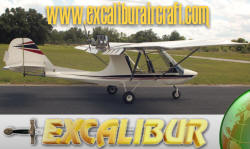Aircraft heater, in cabin heater for Rotax 582, Rotax 618 aircraft engine, heater for Rotax 912 aircraft engine. |
|||||
|
|||||
|
Experience is something you don't get until just after you need it. |
|||||
|
|||||
|
|
|||||
|
|
|||||
|
|
|||||
An in cabin heater for the 582, 618, and 912 Rotax ultralight, experimental and amateur built aircraft! |
|||||
|
As I get older, and my body gets beat up
more and more, little pleasures like, having a gas fireplace
rather than wood, or stepping into a warm car on a cold winter
morning are more and more appreciated. Since I fly using either a 582 Rotax, or the 912 four stroke, which both use radiators the same as my car for cooling and heating I figured there must be some way of easily and economically hooking heat up on my trainer. Looking into it I found that there were several problems. I had to find a heater that worked and was:
After spending about $1700 bucks, on various R & D projects a system that fits all of the above came together. The system shown here is very compact.
Supplies:
Tools required
Procedure: Use the pipe cutters to cut off 4 pieces of 3/4 inch copper about 1 inch long and 2 pieces of 1/2 inch copper about 1 inch long . Use the sand paper to clean these, to remove any foreign material With them clean apply solder paste to the inside of the 3/4 inch T's and to the outside to the pieces of 3/4 inch copper pipe. Use the propane torch to heat them up and solder them into place. Once you have soldered them install the 3/4 inch couplers onto the stubs sticking out of the T's. Now solder the couplers. Now strip a piece very thin piece of wire so that you have about 6 inches of bare wire in you hands. Wrap it tightly around the top of the 3/4 inch coupler, and then lightly solder the wire using a propane torch. Use a file to make the soldered wire smooth and round. This now gives something for your hose clamp to grip when you tighten it. Note: without this you may find yourself having to land in a farmers field like I did when the hose blew off! Repeat this procedure for all of the ends. There you now have a "T" and a reducer to connect into the cooling system. Hooked up this way the heater will only heat up to the engine temperature, and you will find that once you turn the heater on the engine will run cooler. To maintain a constant 160 degrees on the 582 and 200 degrees on the 912 - which is where the engines should be running you now have to find a way to change the airflow into your radiator. We do this on the L'il Buzzard by having a little hand crank in the cockpit, which is attached to the radiator. As the temperature drops we raise the rad up, out of the airflow, until the desired temperature is reached. While this is MY preferred way of maintaining a constant temperature - other customers have installed a shut off valve in the main line just after it comes out of the cylinder head. They connect this via a rod to the inside of the dash where the rod is pushed back and forth, either restricting or opening the flow out of the cylinder head. Now install the "T"'s into the main lines. Connect the smaller heater hoses into your heater. Clamp all lines securely. Hook up the electrics to you heater, making sure you have a good ground. On planes made of composites, or in others where a ground is not readily available you may have to run a line back to the battery. If you are using the heater that I mentioned above it has two speeds - you will need a two speed switch. Or you can hook up only the fast side . With all your hoses connected refill your rad with a mixture of 50% DISTILLED WATER and 50% anti-freeze. (For the 912 it is necessary to adjust the mixture to 80/90 % antifreeze depending on the aircraft engine installation) Start the engine up and let it run for a few minutes. Check your anti-freeze level you will generally have to add more to allow for the extra fluid filling the lines and heater. To fly with a heater safely there are two things that have to be used:
|
|||||
|
|
|||||
|
|||||
| Ultralight Aircraft News.ca Web Magazine EMAIL for l Information. No part of this publication may be copied or distributed, transmitted, transcribed, stored in a retrieval system, or translated into any human or computer language, in any form or by any means, electronic, mechanical, manual, or otherwise, without written permission of Ultralight Aircraft News. By copying or paraphrasing the intellectual property on this site, you're automatically signing a binding contract and agreeing to be billed $10,000 payable immediately. Copyright Ultralight Aircraft News.ca EMAIL | |||||
| Return to Main Index for this section | |||||

 My work is flight training, and I spend more time in my L'il
Buzzard, than my car, I had to find some way of keeping the cabin
warm as the seasons, and mornings got colder.
My work is flight training, and I spend more time in my L'il
Buzzard, than my car, I had to find some way of keeping the cabin
warm as the seasons, and mornings got colder. 